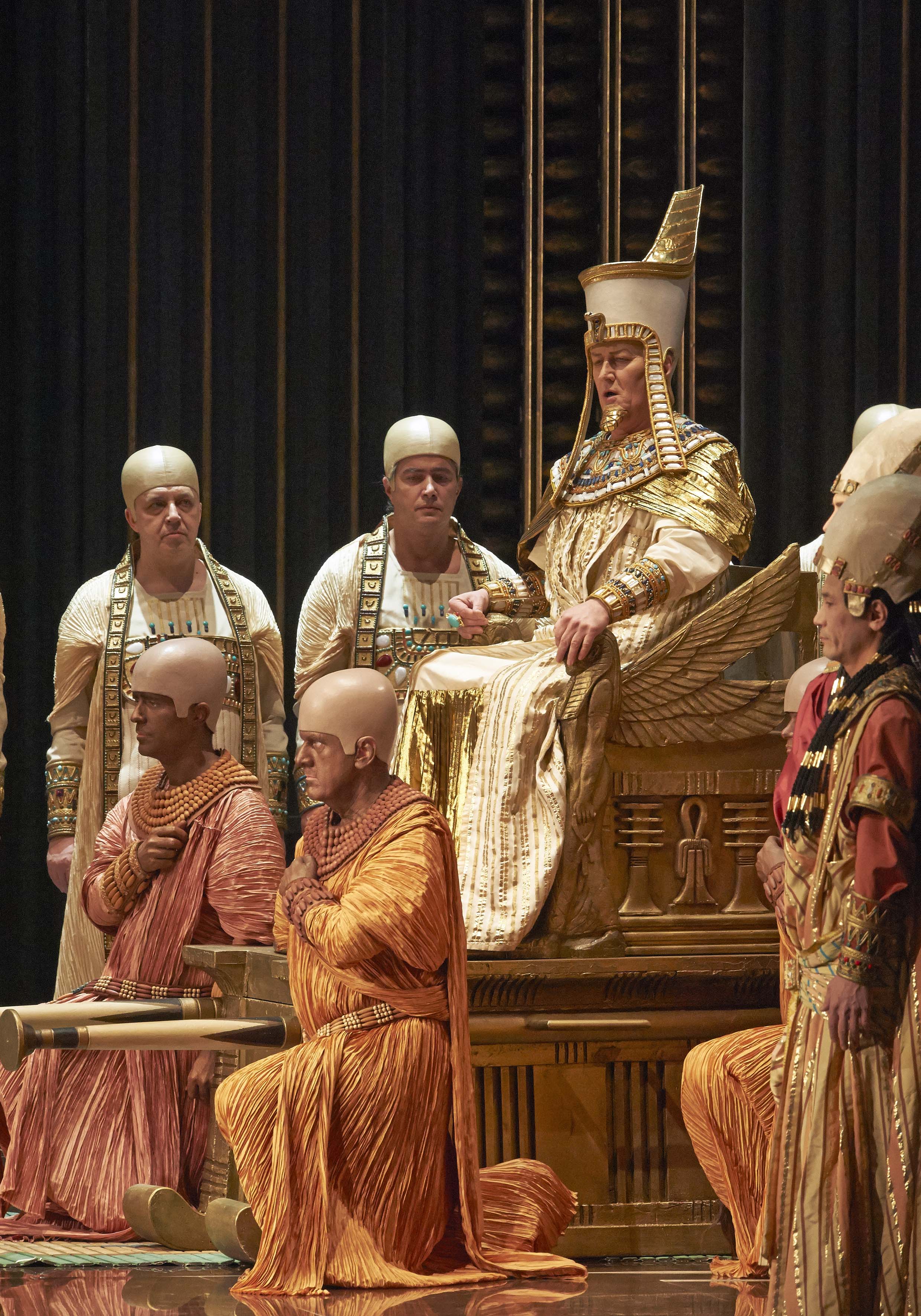
The war is over and the army is about to return. With the beginning of the second act the incidents are transferred to Thebes. The next scene shows us Rhadames in the temple receiving his consecrated sword from the hands of Ramphis, the Priest, while the ceremonials of adoration proceed. Only Aïda knows that Amonasro is her father, and when all the others have gone, she remains to pray to her gods for pity. The King announces Rhadames as his General and Amneris gives him a banner. The court assembles and the King receives a messenger, who announces that Amonasro is leading the Ethiopians. She determines to have revenge if she finds that she is right in her surmise. Aïda and Amneris come upon the scene, and we learn that the princess suspects the existence of the passion between the other two and is jealous. When the Priest has finished, Rhadames declares that he would gladly go forth to conquer, could he but return to Aïda, the slave of the King’s daughter, Amneris.

Ramphis, the high priest, informs Rhadames that the Ethiopians have arisen against Egypt and that Isis has selected the commander of the defending force. The drama begins in the palace at Memphis. The action of the opera takes place in Memphis and Thebes, Egypt, in the days of the Pharaohs. This story is well suited to operatic treatment and the history of the conception and development of the work is interesting. The fluent melody of its score appeals to popular taste, while the technical skill shown in the arrangement of its general plan and the harmonious disposition of all its details arouse the admiration of the most critical observer. The gorgeousness of the coloring in its oriental pictures, the kaleidoscopic succession of brilliant scenes, the ballets, processions, the glitter of court life and “the pomp, the pride, the circumstance of war” unite with its music to make it an opera for the people as well as for the more conservative connoisseur. VERDI’S “Aïda” has come to be the most popular of his operas in this country and one of the most loved of all Italian lyric dramas. It may not be used in any way for profit. Unless otherwise stated in the Copyright Information section above, this material may be used freely for educational and academic purposes. Chapter: INTRODUCTION.Ĭopyright: The text is in the public domain.įair Use: This material is put online to further the educational goals of Liberty Fund, Inc. Henderson (New York: Dodd, Mead & Co., 1911). Conscious of the tensions at play in the Mediterranean Basin and the issues they raise of nationalism, the struggle for freedom, and exile, he explores the different facets of this opera in which personal desire faces a sense of duty, individual destiny that of the collective destiny.Source: Giuseppe Verdi, Aida by Antonio Ghislanzoni, music by Giuseppe Verdi, edited with an introduction by W.J.

The director, Stathis Livathinos, who is the Artistic Director of the National Theatre of Greece, comes to us to stage his first opera, Aida. The historical scenes and triumphal marches, which have contributed to the popularity of this opera, are followed by intimate but powerful duets and introspective moments of great intensity. Aida: My rival! So be it – for we are of equal standing…” With war and acts of violence in the background, Aida tells the story of a fascinating and tense love triangle between the Egyptian princess, Amneris, Ramades, an officer, and Aida, a Nubian princess, captured and reduced to slavery. “Amneris: I love him too… I, the Pharaoh’s daughter, am your rival.

Programme & calendar / Opera Should you turn your back on love when duty calls?


 0 kommentar(er)
0 kommentar(er)
